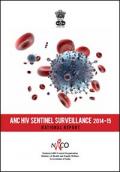Publications - Released in 2016
This national report aims to provide a more detailed analysis of the results from HSS 2014-15. The profiles of the respondents and their correlations with the HIV prevalence, have been detailed in the report. This analysis has also covered the correlation between syphilis and HIV and, results of the same have been presented. Considering the diversity of the epidemic, HIV epidemic trends has been presented up to the district level to provide the indications of epidemic trajectory at the most local level. Besides, the report also presents the site wise data, continuing the tradition set in 2003.
Overall, the HIV epidemic is declining in the country but State wise variation has been observed. Declining trend has been observed in the erstwhile high prevalence states of Southern India. While long term trend is declining in the high prevalence States of the North- Eastern India, stabilization has been noticed in recent past in these States. Though the HIV prevalence is low, continuation of rising trends in many States of northern India is an area of concern. The analysis has also revealed a relatively higher prevalence (0.50% or above) among young pregnant women (15-24 years old) or among primi-gravida in many states. HIV prevalence in young pregnant women and primi-gravida in many states. HIV prevalence in young pregnant women and primi-gravida is considered as proxy for new infections, and hence States with higher prevalence in this subgroup need to note it duty and take urgent steps.
Downloads
Organizations
- National AIDS Control Organisation (NACO)
- Ministry of Health and Family Welfare (MoHFW) - India






